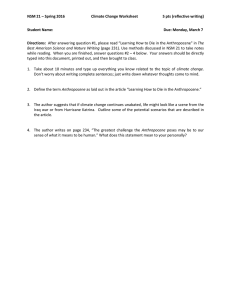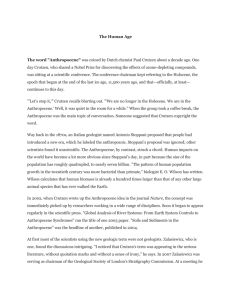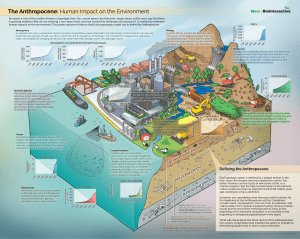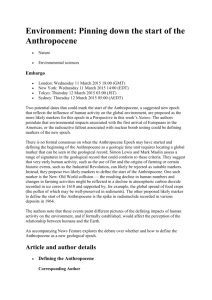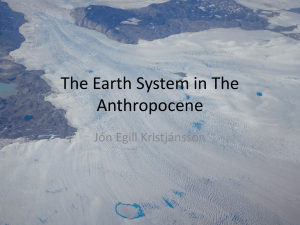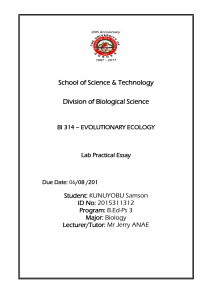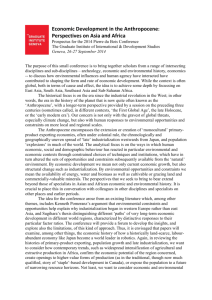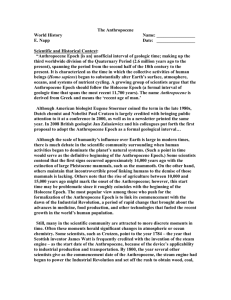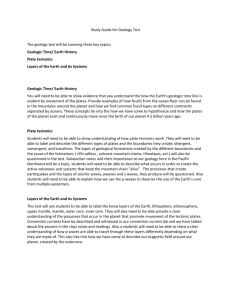Anthropocene, p2G
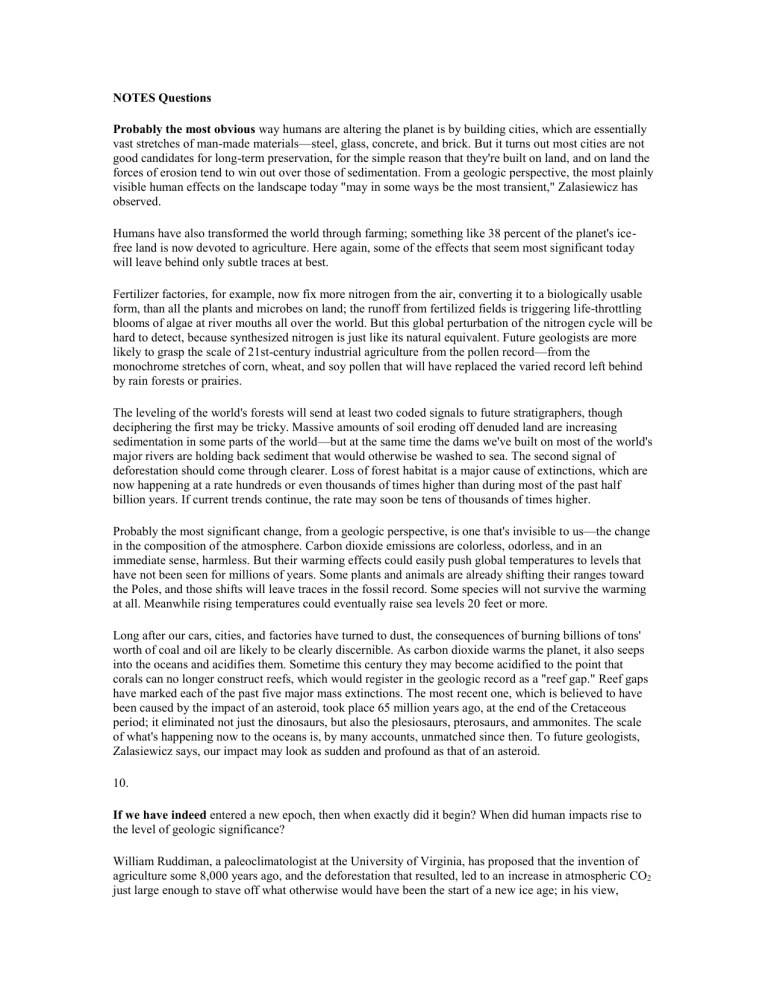
NOTES Questions
Probably the most obvious way humans are altering the planet is by building cities, which are essentially vast stretches of man-made materials—steel, glass, concrete, and brick. But it turns out most cities are not good candidates for long-term preservation, for the simple reason that they're built on land, and on land the forces of erosion tend to win out over those of sedimentation. From a geologic perspective, the most plainly visible human effects on the landscape today "may in some ways be the most transient," Zalasiewicz has observed.
Humans have also transformed the world through farming; something like 38 percent of the planet's icefree land is now devoted to agriculture. Here again, some of the effects that seem most significant today will leave behind only subtle traces at best.
Fertilizer factories, for example, now fix more nitrogen from the air, converting it to a biologically usable form, than all the plants and microbes on land; the runoff from fertilized fields is triggering life-throttling blooms of algae at river mouths all over the world. But this global perturbation of the nitrogen cycle will be hard to detect, because synthesized nitrogen is just like its natural equivalent. Future geologists are more likely to grasp the scale of 21st-century industrial agriculture from the pollen record—from the monochrome stretches of corn, wheat, and soy pollen that will have replaced the varied record left behind by rain forests or prairies.
The leveling of the world's forests will send at least two coded signals to future stratigraphers, though deciphering the first may be tricky. Massive amounts of soil eroding off denuded land are increasing sedimentation in some parts of the world—but at the same time the dams we've built on most of the world's major rivers are holding back sediment that would otherwise be washed to sea. The second signal of deforestation should come through clearer. Loss of forest habitat is a major cause of extinctions, which are now happening at a rate hundreds or even thousands of times higher than during most of the past half billion years. If current trends continue, the rate may soon be tens of thousands of times higher.
Probably the most significant change, from a geologic perspective, is one that's invisible to us—the change in the composition of the atmosphere. Carbon dioxide emissions are colorless, odorless, and in an immediate sense, harmless. But their warming effects could easily push global temperatures to levels that have not been seen for millions of years. Some plants and animals are already shifting their ranges toward the Poles, and those shifts will leave traces in the fossil record. Some species will not survive the warming at all. Meanwhile rising temperatures could eventually raise sea levels 20 feet or more.
Long after our cars, cities, and factories have turned to dust, the consequences of burning billions of tons' worth of coal and oil are likely to be clearly discernible. As carbon dioxide warms the planet, it also seeps into the oceans and acidifies them. Sometime this century they may become acidified to the point that corals can no longer construct reefs, which would register in the geologic record as a "reef gap." Reef gaps have marked each of the past five major mass extinctions. The most recent one, which is believed to have been caused by the impact of an asteroid, took place 65 million years ago, at the end of the Cretaceous period; it eliminated not just the dinosaurs, but also the plesiosaurs, pterosaurs, and ammonites. The scale of what's happening now to the oceans is, by many accounts, unmatched since then. To future geologists,
Zalasiewicz says, our impact may look as sudden and profound as that of an asteroid.
10.
If we have indeed entered a new epoch, then when exactly did it begin? When did human impacts rise to the level of geologic significance?
William Ruddiman, a paleoclimatologist at the University of Virginia, has proposed that the invention of agriculture some 8,000 years ago, and the deforestation that resulted, led to an increase in atmospheric CO just large enough to stave off what otherwise would have been the start of a new ice age; in his view,
2
humans have been the dominant force on the planet practically since the start of the Holocene. Crutzen has suggested that the Anthropocene began in the late 18th century, when, ice cores show, carbon dioxide levels began what has since proved to be an uninterrupted rise. Other scientists put the beginning of the new epoch in the middle of the 20th century, when the rates of both population growth and consumption accelerated rapidly.
Zalasiewicz now heads a working group of the International Commission on Stratigraphy (ICS) that is tasked with officially determining whether the Anthropocene deserves to be incorporated into the geologic timescale. A final decision will require votes by both the ICS and its parent organization, the International
Union of Geological Sciences. The process is likely to take years. As it drags on, the decision may well become easier. Some scientists argue that we've not yet reached the start of the Anthropocene—not because we haven't had a dramatic impact on the planet, but because the next several decades are likely to prove even more stratigraphically significant than the past few centuries. "Do we decide the Anthropocene's here, or do we wait 20 years and things will be even worse?" says Mark Williams, a geologist and colleague of
Zalasiewicz's at the University of Leicester in England.
Crutzen, who started the debate, thinks its real value won't lie in revisions to geology textbooks. His purpose is broader: He wants to focus our attention on the consequences of our collective action—and on how we might still avert the worst. "What I hope," he says, "is that the term 'Anthropocene' will be a warning to the world."
